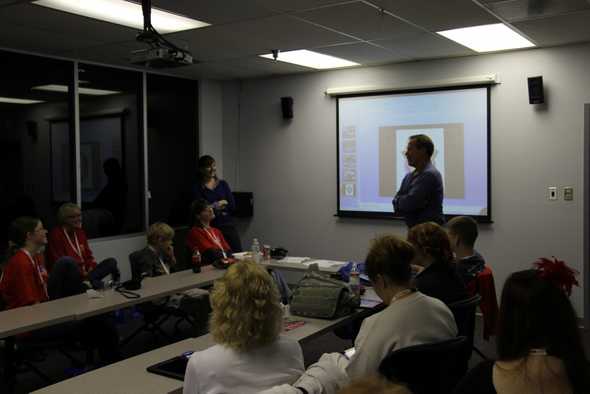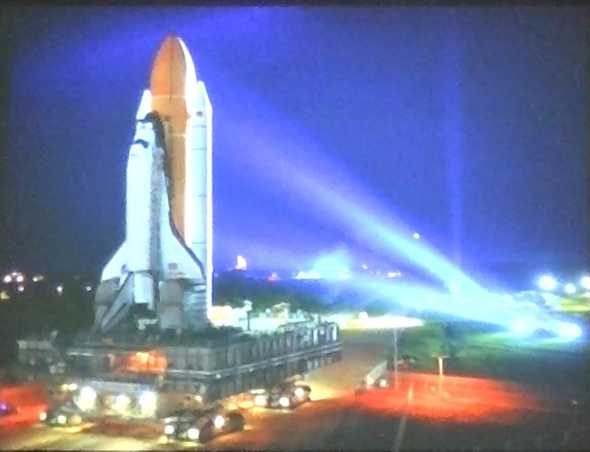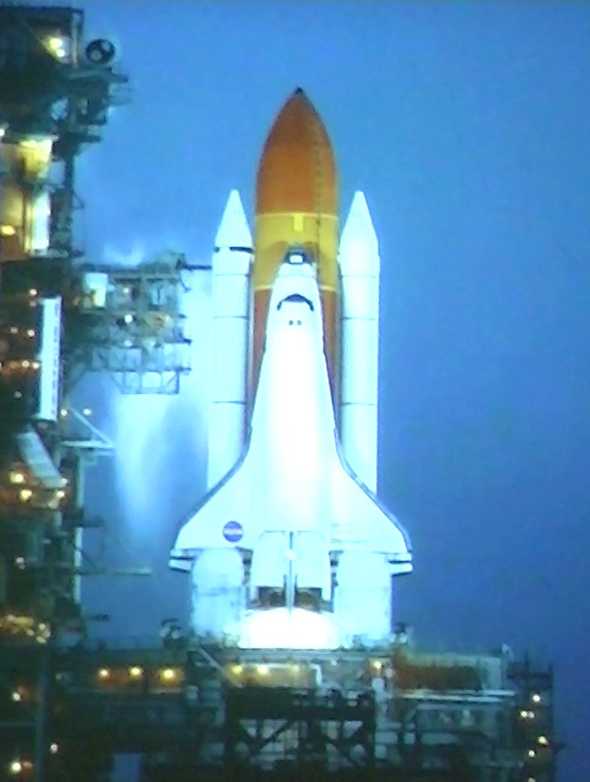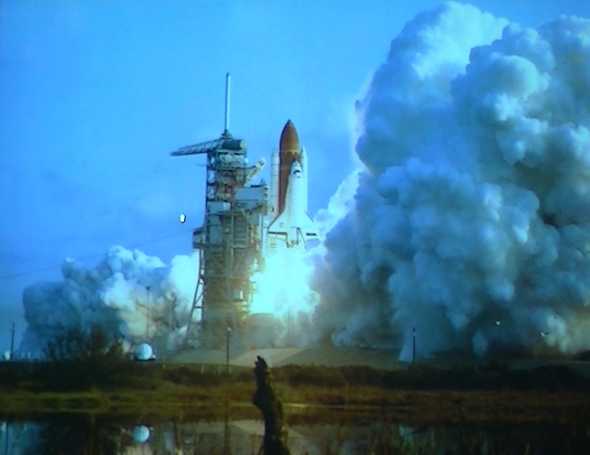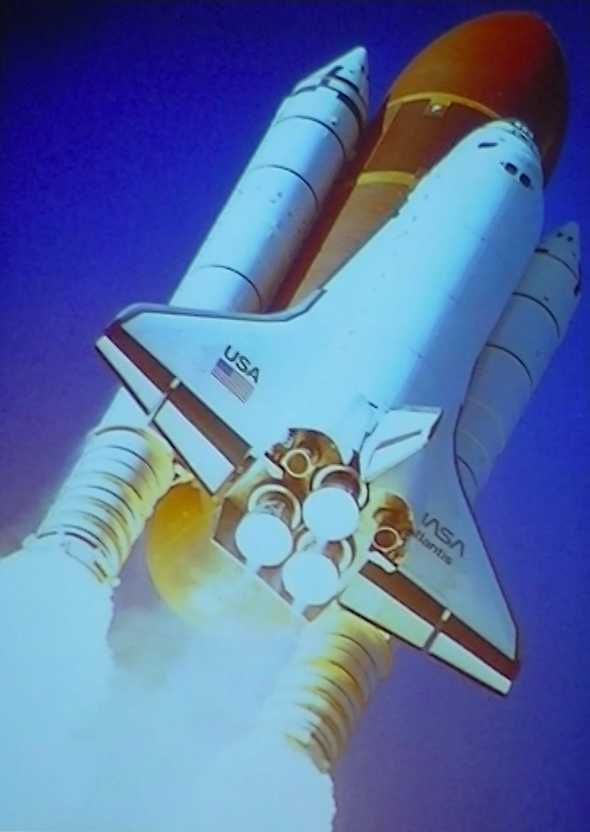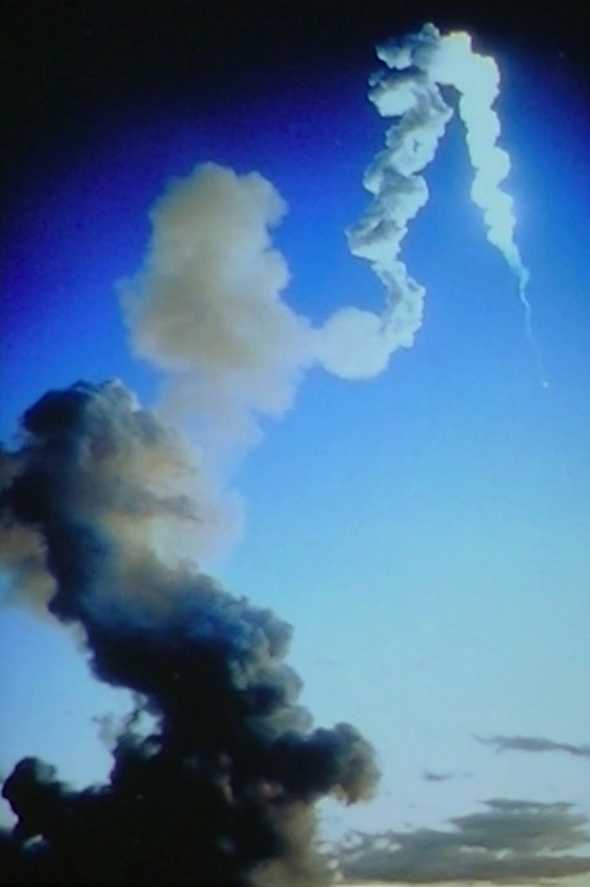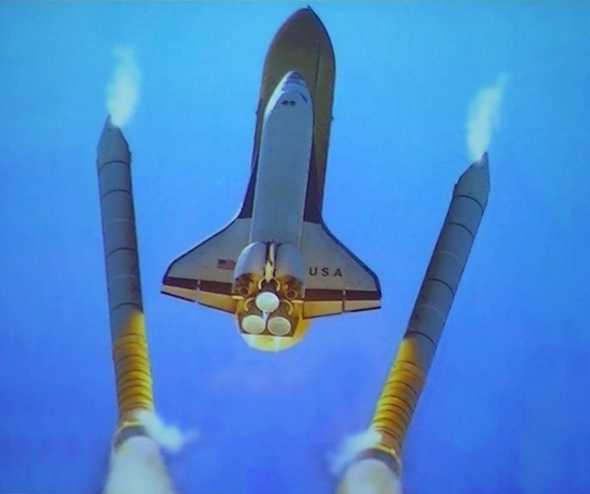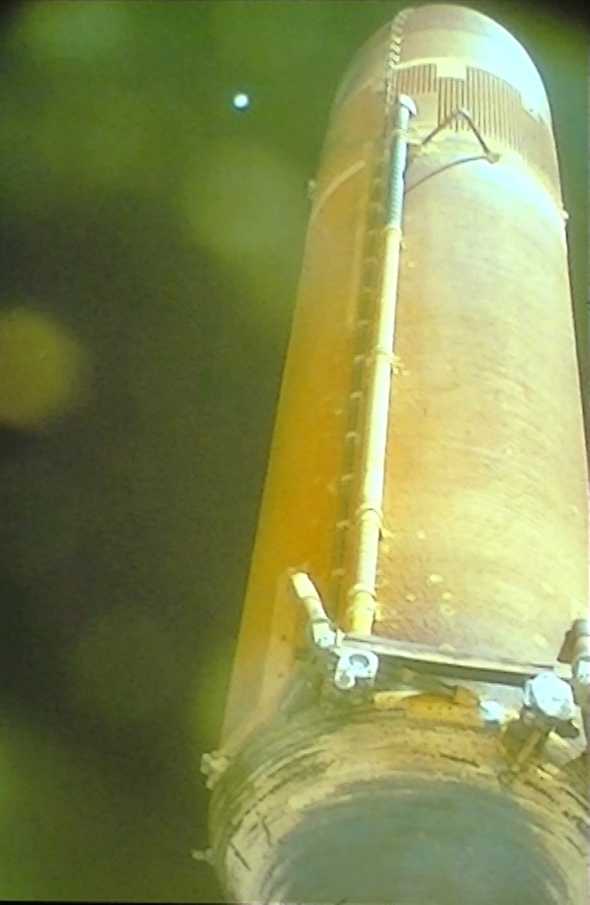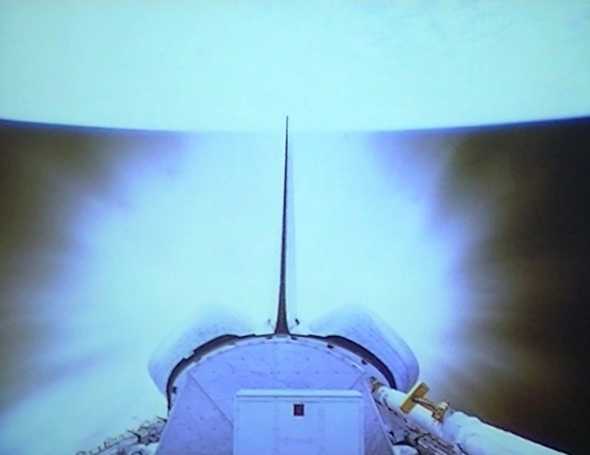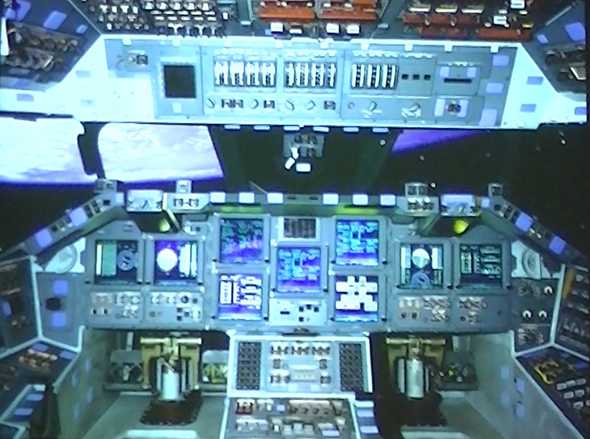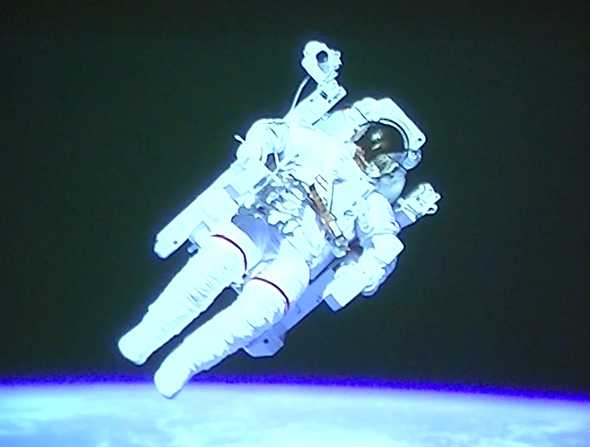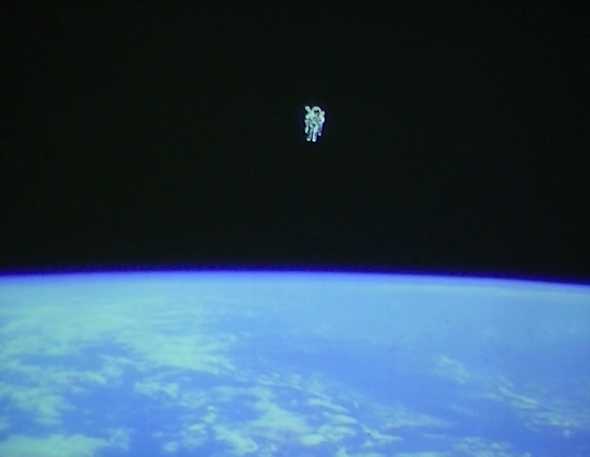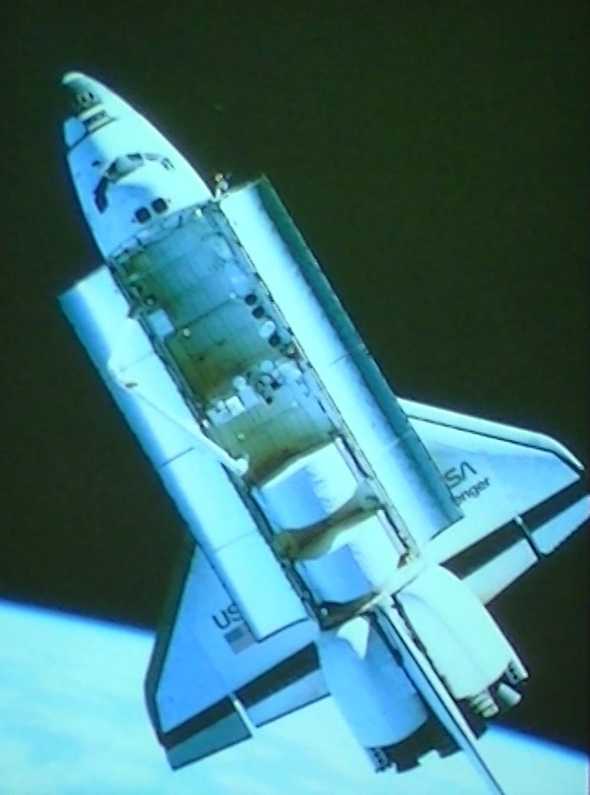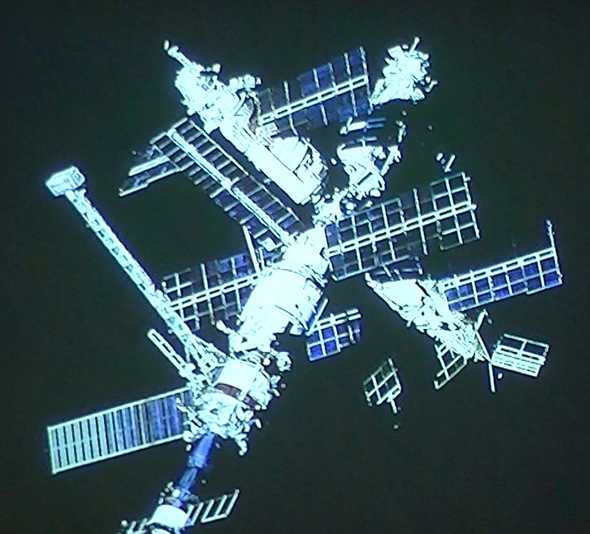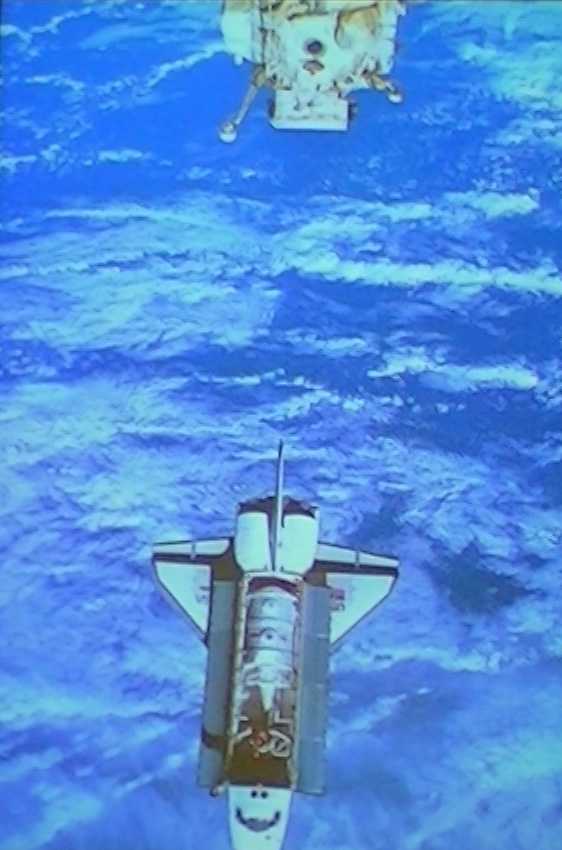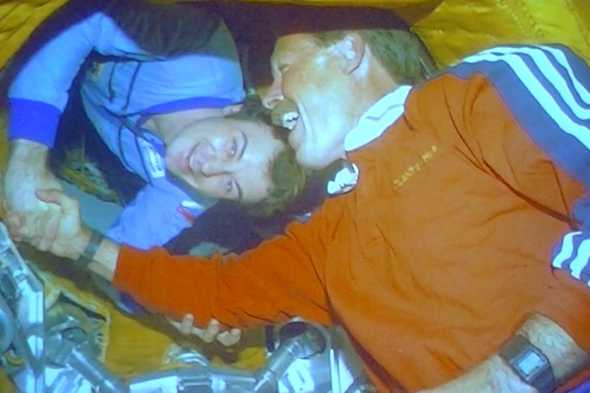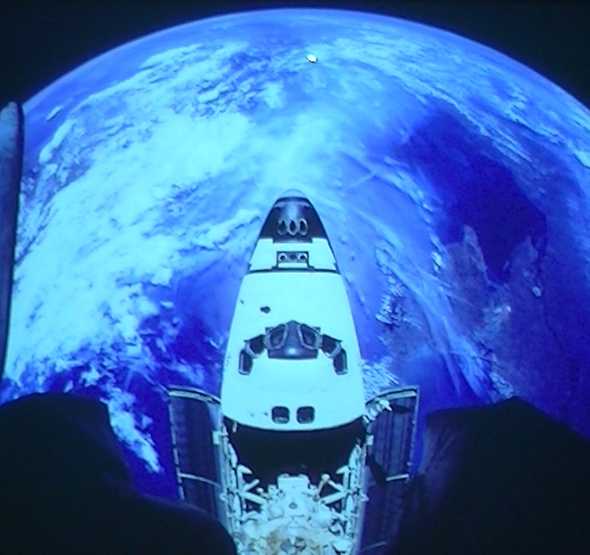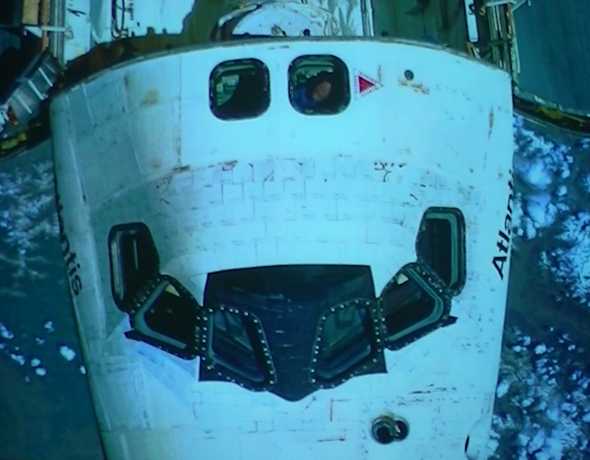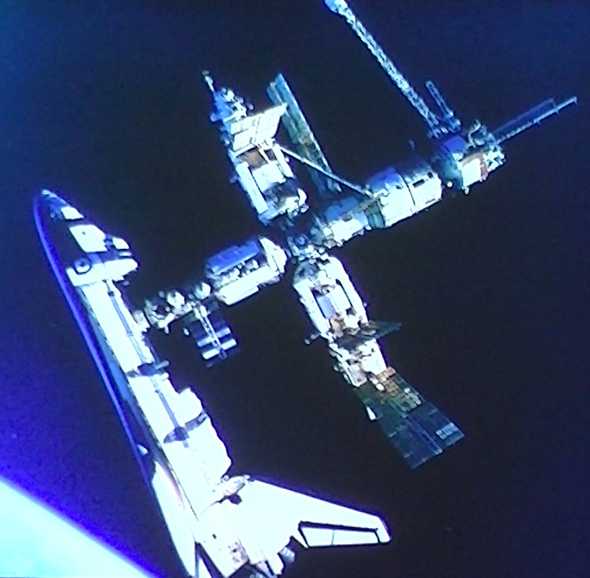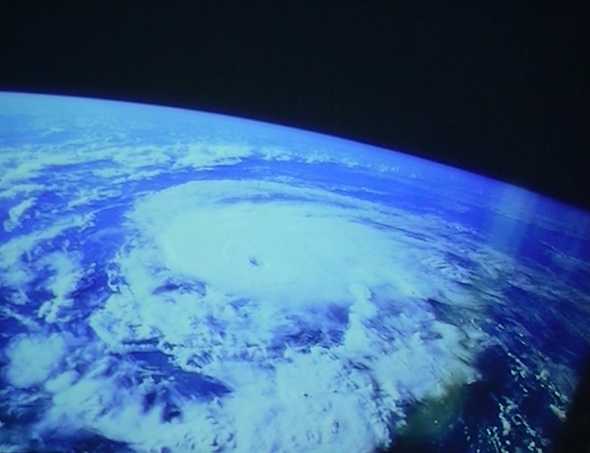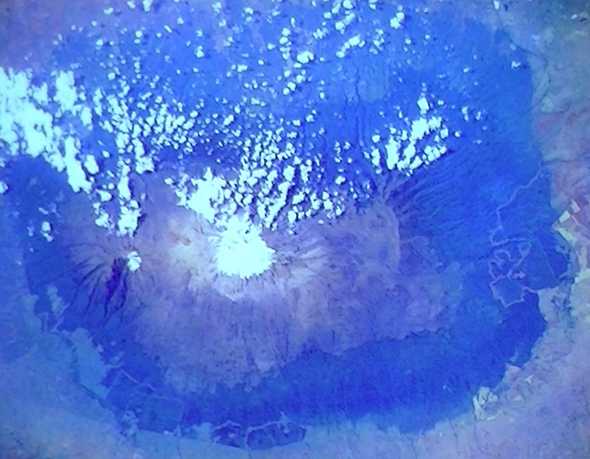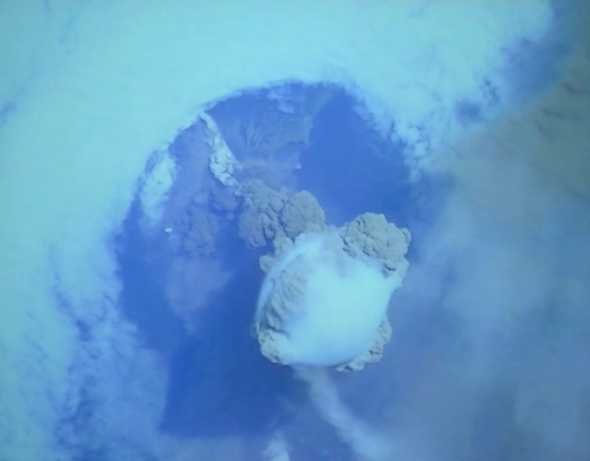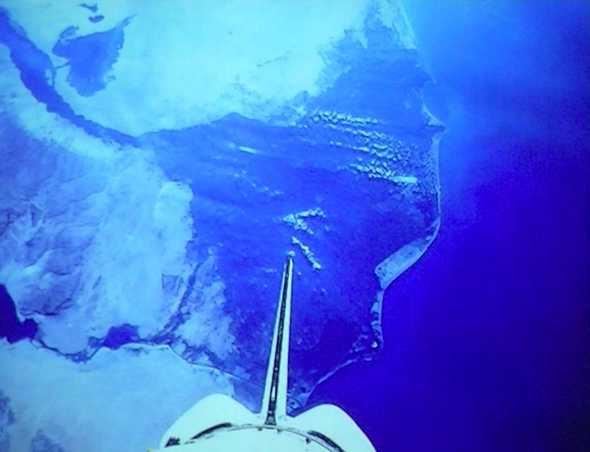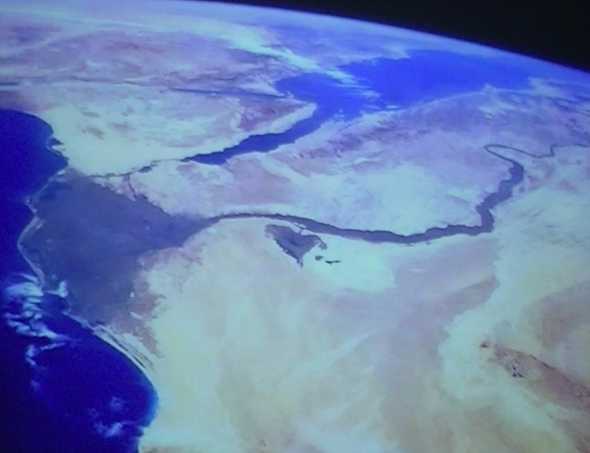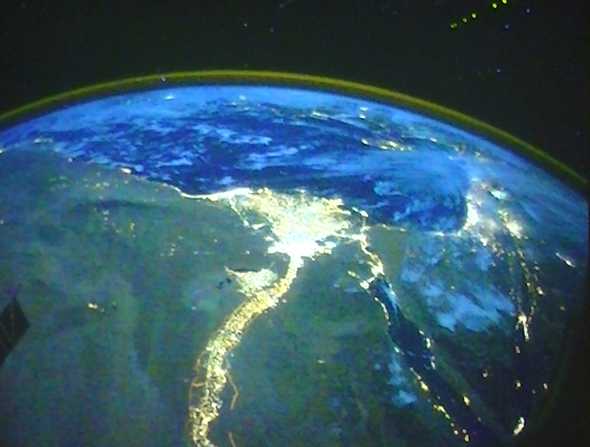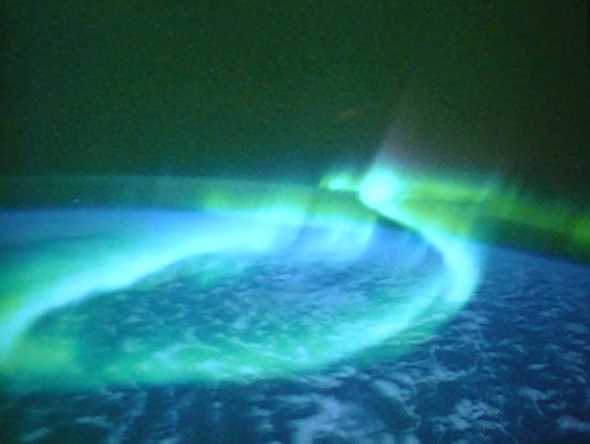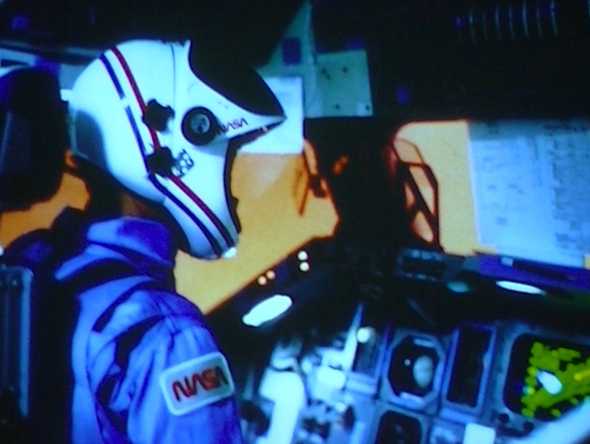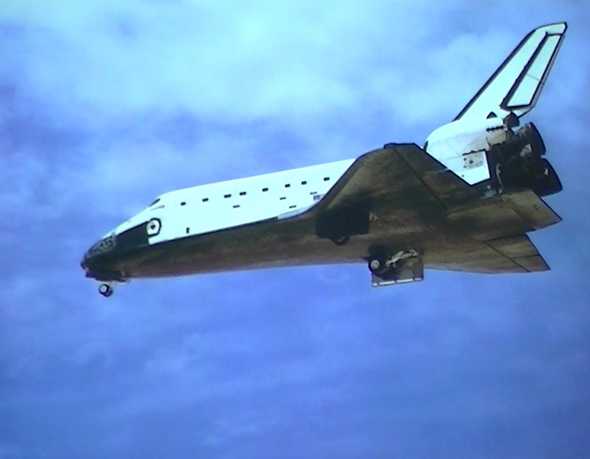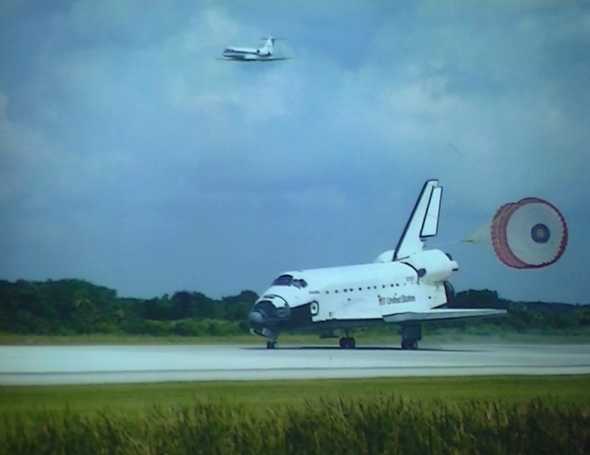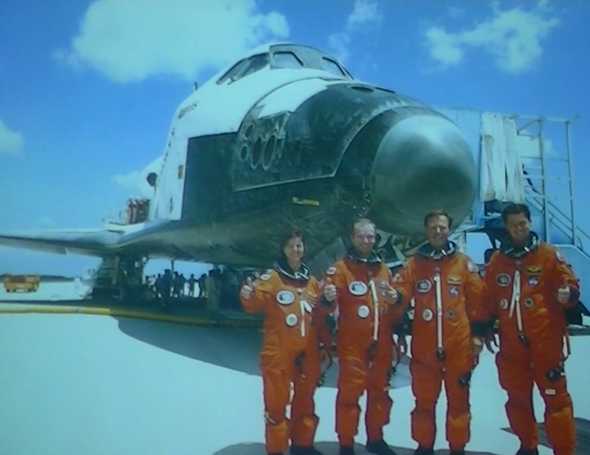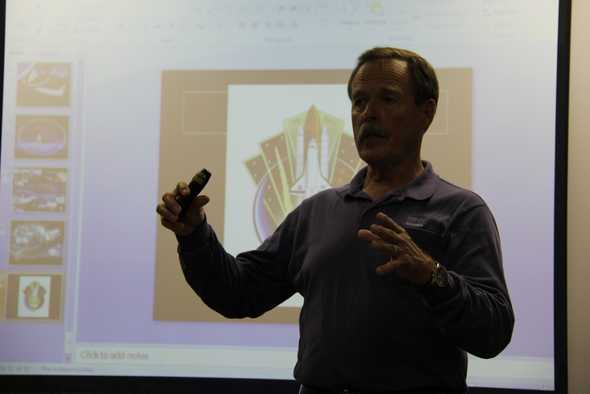Hoot Gibson, the man who has flown everything
During the MathAlive! Space Camp tweetup last week, we were very fortunate to have five-time Astronaut Robert “Hoot” Gibson speak to us about flying aboard one of the most beautiful spacecraft the United States has sent to space.
Gibson has been described by the Smithsonian’s Air & Space Magazine as the Man Who’s Flown Everything. Among his Astronaut peers, he was known as the best of the best and the Chuck Yeager of the Astronaut Corps, able to fly anything with a stick and throttle. From light piston aircraft to thundering fighters, supersonic jets to the Space Shuttle, Hoot has flown it.
After earning a degree in Aeronautical Engineering at Cal Polytech, Gibson entered into active duty with the Navy. He saw duty aboard the USS Coral Sea and the USS Enterprise flying combat missions in Southeast Asia. Since graduating first in his class at Navy Test Pilot School and graduating from the Navy Fighter Weapons School, better known as “Top Gun,” Gibson has flown 14,000 hours in 136 types of civilian and military aircraft, a number that includes over 300 carrier landings.
Gibson was selected as a NASA astronaut in 1978 and is a veteran of five shuttle missions: 1984 STS-41B Challenger, 1986 STS-61C Columbia, 1988 STS-27 Atlantis, 1992 STS-47 Endeavour, and 1995 STS-71 Atlantis. He was selected for extraordinary missions, serving as Mission Pilot on his first mission and Commander on the other four. Gibson has spent a total of 36.5 days in space.
He has been Chief Astronaut and Deputy Director of Flight Crew Operations, an Aeronautical Engineer, a Naval Aviator and test pilot, Astronaut, and is a world record holder. Space Shuttle Discovery was the only one of the five that Gibson didn’t fly on. His wife, three time shuttle astronaut, Dr. Rhea Seddon, flew on Discovery on her first mission.
He began talking about his first launch aboard Challenger in 1984 on STS-41B. About seven seconds prior to liftoff, they lit three engines on the back of the space shuttle which burn liquid hydrogen and liquid oxygen, generating 1.5 million pounds of thrust. When everything looked good, they lit the two white solid rocket motors, each generating 3 million pounds of thrust and the journey began. The whole vehicle only weighed 4.5 million pounds.
Gibson started doing the math: if you divide thrust by mass, they lifted off at about two times the force of gravity. By the time the tail of the orbiter reached the top of the launch tower, the vehicle was going over 100 miles per hour. They went supersonic, the speed of sound, in about 40 seconds. On his first mission, Gibson said he was looking at the mach meter about 90 seconds after liftoff. Mach is the speed of sound, which at sea level is 760 miles per hour. The meter was showing Mach 3, which surpassed his prior experience at Mach 2 in jet fighters.
At two minutes after launch, the solid rocket motors burn out and are jettisoned. The motors are attached to the External Tank with explosive bolts that are set off. At 30 miles up, 30 miles out over the Atlantic, they reached speeds of 3000 miles per hour. Rocket thrusters on the nose and tail of the solid rocket motors pushed them away from the vehicle, each with about 85,000 pounds of thrust. They fell back down into the ocean and were recovered by NASA’s Liberty and Freedom ships. The motors were towed back to land, refurbished, and reused.
After another six and a half minutes, they reached orbital speed, 17,500 miles per hour. The External fuel tank falls back to Earth. The orbiter used its smaller rocket motors to get the rest of the way into orbit.
Gibson said the time of this final burn can be easily calculated. For example, if we know perigee, the low point in orbit, is at an altitude of 20 miles, and they need it to be at an altitude of 160 miles, they have a distance of 140 miles. Moving at a speed of 2 feet per second per mile, they need to burn at 280 feet per second. It happens to be 140 seconds because each of the two motors gives a foot per second per second. The crew can double check the result that the onboard computer is calculating. This basic arithmetic calculation comes in handy when there are malfunctions. In the simulator, with an engine failed, they knew they needed at least an 80 miles high perigee. They could perform the simple calculation themselves and perform the burn manually without the need for the computer to do it. It isn’t really complex math like Calculus.
The cockpit of the shuttle shares many similarities to cockpits of normal aircraft. It has an attitude gyro and compass. But there are over 1500 switches on board. Gibson said it takes about three and a half years of training to learn to fly one.
On STS-41B, Astronaut Bruce McCandless II and Astronaut Robert L. Stewart went outside for the first untethered spacewalk. Gibson was the co-pilot and took pictures of McCandless. Gibson is often asked if he ever performed a space walk. He always answers that he was “a pilot astronaut and we are far too valuable.” In reality, pilots spend so much time training on launch, reentry, landing, aborts, vehicle systems, rendezvous, docking, to even out training time, other crew are trained to perform space walks.
Another question that has been asked frequently is what would have happened to McCandless had he run out of fuel or had a malfunction. There were contingencies to fly Challenger over to him using the shuttle’s rocket thrusters, but fortunately it was not necessary. The subsequent shuttle mission used the rocket pack to fly over to a disabled satellite and bring it back to the cargo bay for repairs.
On Gibson’s last mission, STS-71, he was responsible for docking with Mir. It was the first docking a space shuttle ever did. He docked Atlantis to the Krystal module on June 29th, 1995. Mir had been assembled piece by piece over nine years. The Krystal module was designed to dock with the Russian’s space shuttle, but was never used. Rendezvous and docking was performed manually by Commander Gibson. The docking ring was about four feet in diameter, needed to be aligned within two inches, and the contact velocity had to be no more than 1/10th of a foot per second, or 1.2 inches per second. If docking had occurred at 2/10th of a foot per second, the docking mechanism could have been damaged. If that wasn’t enough pressure, they told Gibson five billion people were watching the docking on television.
There were two methods of approach, called SNIP and SNOOPY. Shuttle Nose In Plane, SNIP, was used during docking. With SNIP, the shuttle nose was in the plane of motion. On a SNIP approach, at any range-to-go, if the closure rate was no faster than 2 x range, divided by 1000, they could coast to a stop and not have to fire breaking pulses to slow down. For example, if the shuttle was 300 feet out, 2 x 300 = 600, 600 / 1000 = 0.6 feet per second. If the shuttle wasn’t closing any faster than 0.6 feet per second, it could coast to a stop.
With SNOOPY, Shuttle Nose Out Of Plane Yaw, where the shuttle noise is out of plane in the Y-axis, they could only go 1.5 x range, divided by 1000. This decreased speed compensates when they thrust sideways, which increases the closure rate.
As Shuttle Commander, Gibson had the privilege to shake hands with Mir Commander Vladimir Dezhurov after they docked. There was a live television feed to Moscow and Houston for this big moment. President Clinton went on TV that night and announced that this handshake marked the end of the Cold War. Gibson spent five days aboard Mir, undocking on the Fourth of July. Mir is a Russian word that means world and peace.
When Atlantis departed, a Soyuz capsule photographed the shuttle with Mir. The shuttle also orbited around Mir taking photographs and then returned home safely.
There were plenty of things Gibson saw while orbiting the blue marble. On Gibson’s fourth mission in September 1992, he saw Hurricane Bonnie.
On his first mission, he saw Mount Kilimanjaro, the tallest mountain in Africa and a volcano erupting.
On his third mission, he flew over Greenland and the Soviet Union on a classified Department of Defense mission. Gibson said the North Atlantic is full of flights travelling between the US and Europe and aircraft contrails can be seen from space.
On his fourth mission, he flew over the delta of the Nile river and the Pyramids. At night, it was easy to determine where civilization was located. In this case, along the Nile river, in Kyro, Alexandria, and Isreal.
Because they traveled around the Earth every ninety minutes, they had the chance to see the sun rise and set sixteen times a day. But the prettiest thing that Gibson has seen is the Aurora Borealis. During a high inclination orbit, between 57 degrees North and 57 degrees South, the shuttle would get up near the Aurora. Gibson had the opportunity to see the Aurora Borealis in the Northern Hemisphere and Aurora Australis in the Southern Hemisphere.
During re-entry, a glowing plasma at temperatures of 9000 degrees can be seen outside the cockpit windows. Gibson said gap fillers between tiles that came loose were instantly burned up and looked like sparks flying by.
Before their first mission, a co-pilot was required to complete at least 500 practice landings in simulators. A mission commander was required to have completed at least 800 practice landings. The hydraulically-controlled landing gear remained stowed until the very last second, at 300 feet above the ground, because the shuttle was gliding through the air. It also provided for a much smoother ride for the crew onboard. Surprisingly, there was no way to raise the gear and the switch was protected multiple ways. They even disconnected the switch during orbit to ensure the landing gear remained stowed.
Speed at touch down was at 205 knots or 235 miles per hour. A drag chute was deployed and used to slow the shuttle down. The chute was not added until the middle of 1992. Prior to that, brakes were used and it wasn’t unusual to destroy the brakes from the high speed. With the addition of the chutes, it was much easier to stop.
The shuttle program flew 135 missions over 30 years, with only two vehicle losses. Gibson compared that to the total number of Mercury, Gemini, Apollo, Soyuz and Skylab missions before the shuttle, just 35, and called the shuttle program one of the biggest advancements in aviation and a successful program.
When asked how the orbiters he flew varied or were similar, Gibson said that Columbia had different control panels and Developmental Flight Instrumentation. His second mission aboard Columbia was the most interesting for Gibson due to a number of malfunctions all the way to orbit. One included a warning for a helium leak, which could have led to an engine shutdown. The most interesting flight was the Mir docking, which was only the second time that an American spacecraft and Russian spacecraft had docked, the first being in 1975 with the Apollo-Soyuz docking. For that mission, the American crew had to learn to speak Russian. Gibson said it was a challenge due to the intricacies of the Russian language.
Gibson grew up wanting to be a jet fighter pilot and aeronautical engineer like his father. He wasn’t particularly interested in space because they were flying capsules. He wanted flying machines. He was looking through Aviation Week in 1974 and saw the first artist concept of the space shuttle. At that time he was flying the F-14 Tomcat in the Navy’s first Tomcat squadron. He was attracted by the space shuttle because it flew higher and faster than the F-14.
He knew if he wanted to be a space shuttle pilot, he would have to be a test pilot. When asked if test pilots are out of their mind, Gibson said while it takes a different mindset than the average person, you also need confidence in the engineers and people who design and build the systems.
Since 1998, he has been racing in the Unlimited class of the Reno Air Races. He recently finished second in the Overall category at average speeds of 456 mph. He flew in a group of eight airplanes, seventy feet above the ground.
He was born in New York, grew up in California, and now resides in Tennessee with his wife, Dr. Rhea Seddon, a three time Shuttle astronaut. Gibson met his wife in the 1978 Astronaut class, which was the first space shuttle class. She was one of the original six women astronauts selected. She grew up in the south, became a medical doctor, and got a private pilot’s license. The two spent eighteen years in the program. They have three children, a son and two daughters.
It was an incredible talk, with incredible pictures. Here’s the video of his talk:
Photos courtesy of Gibson’s presentation.
